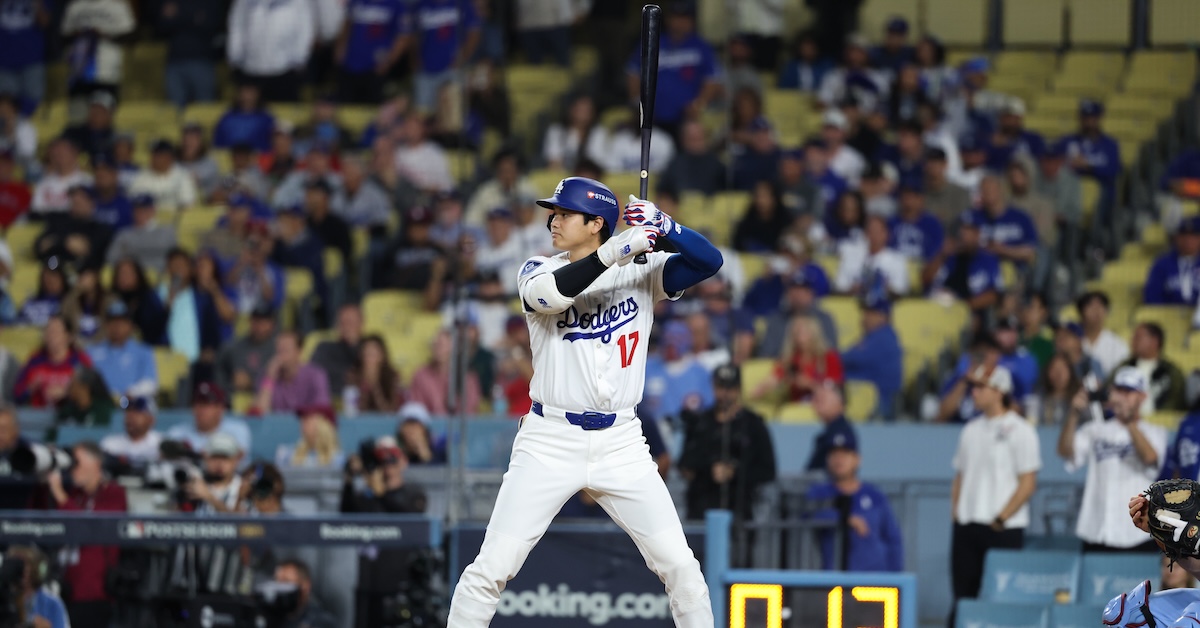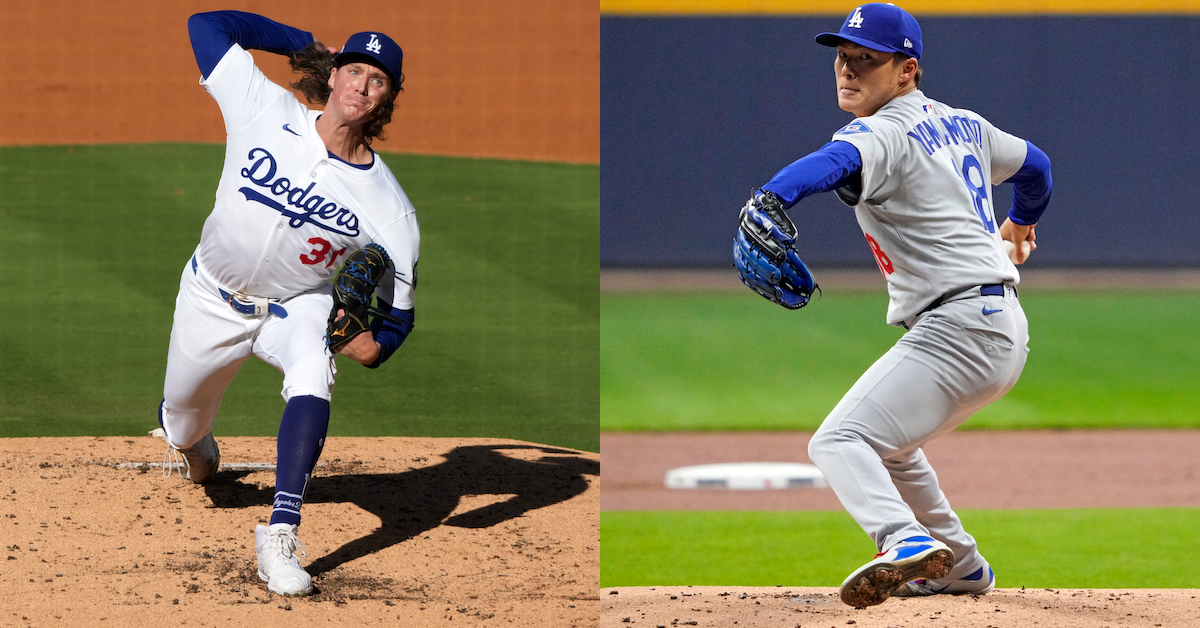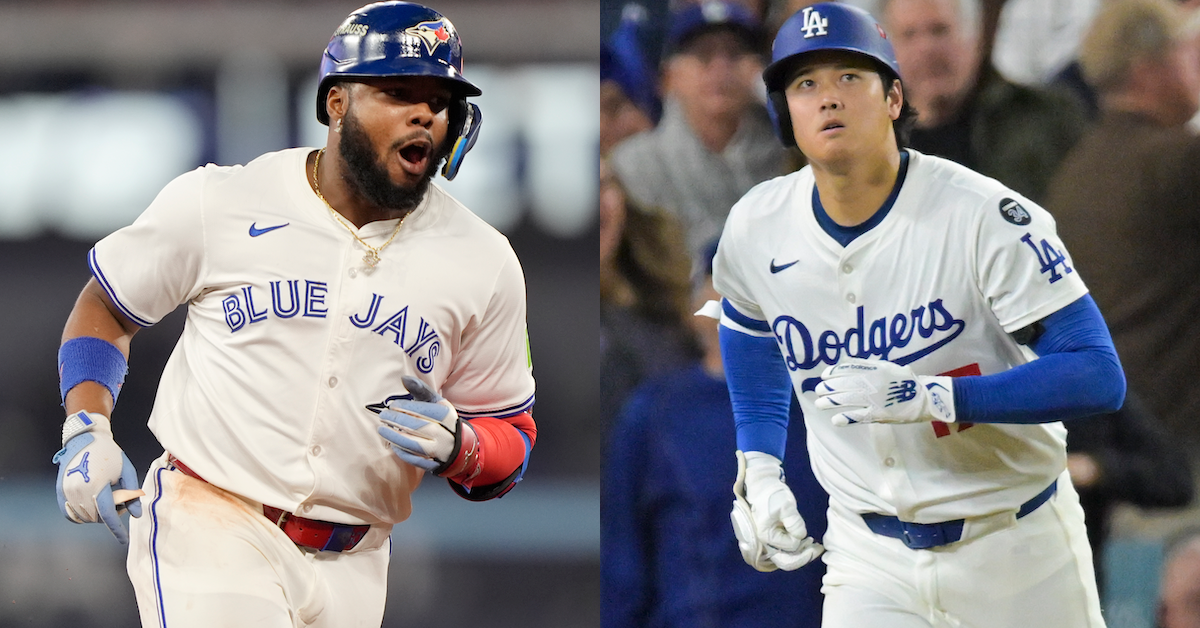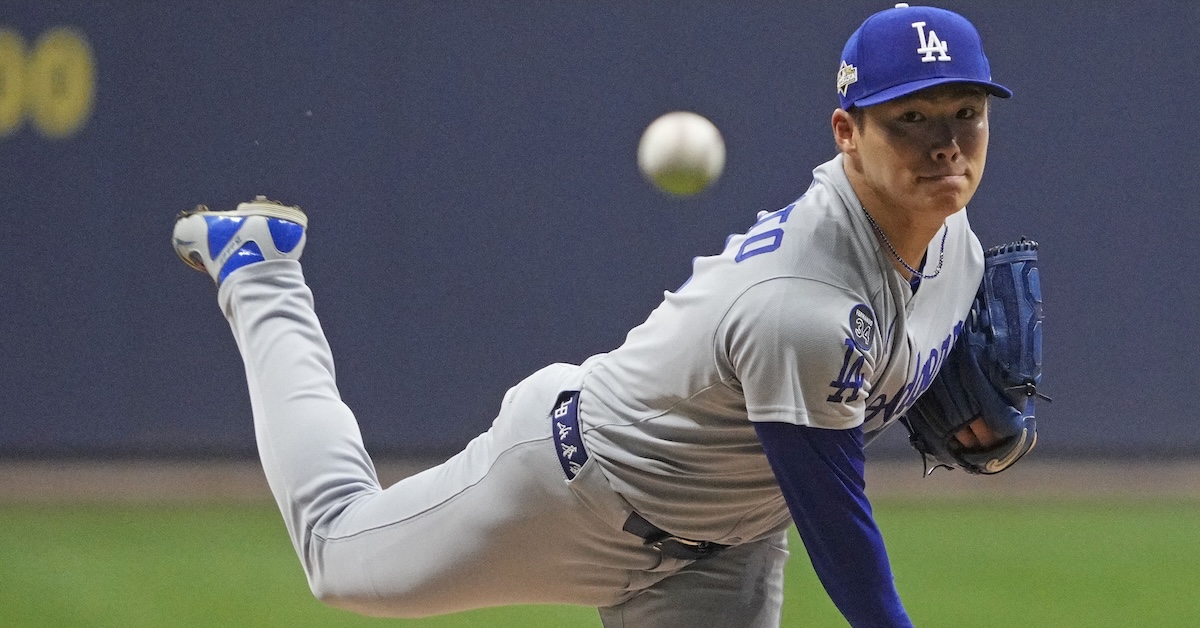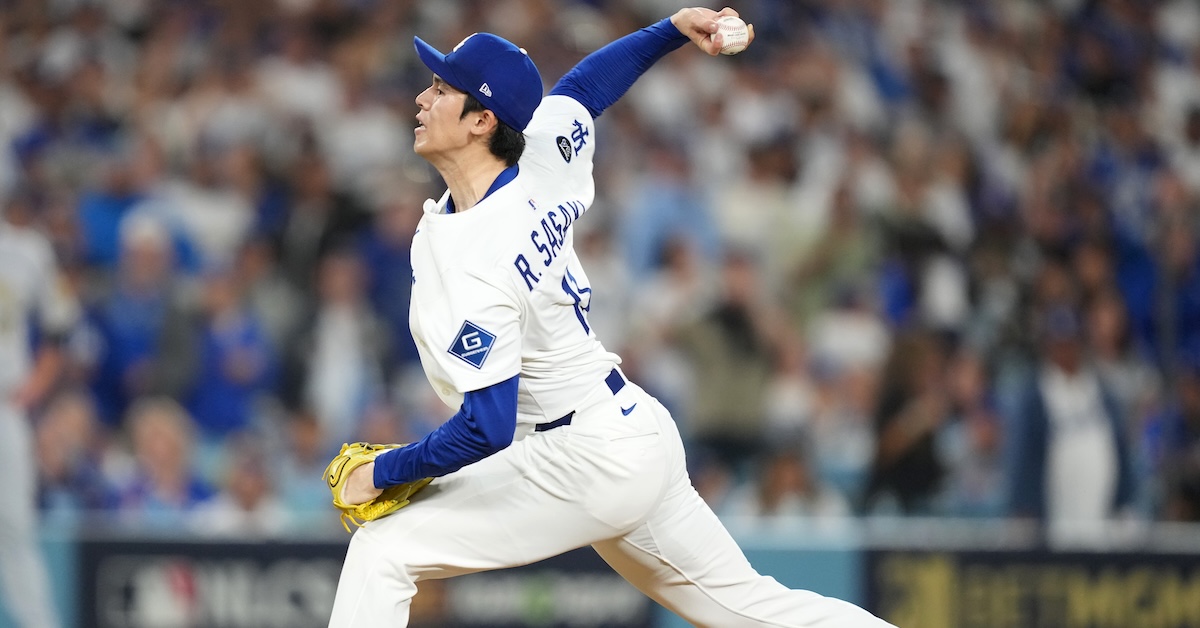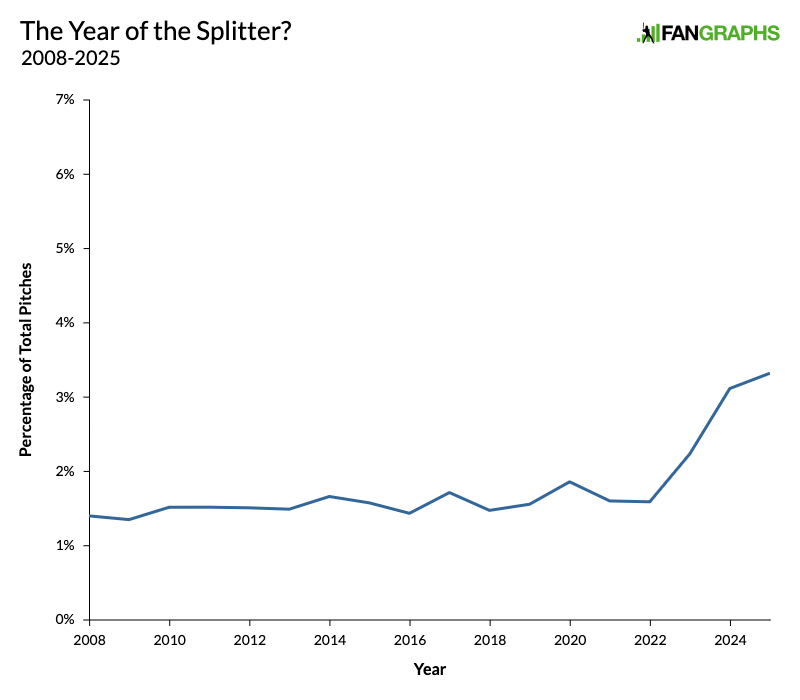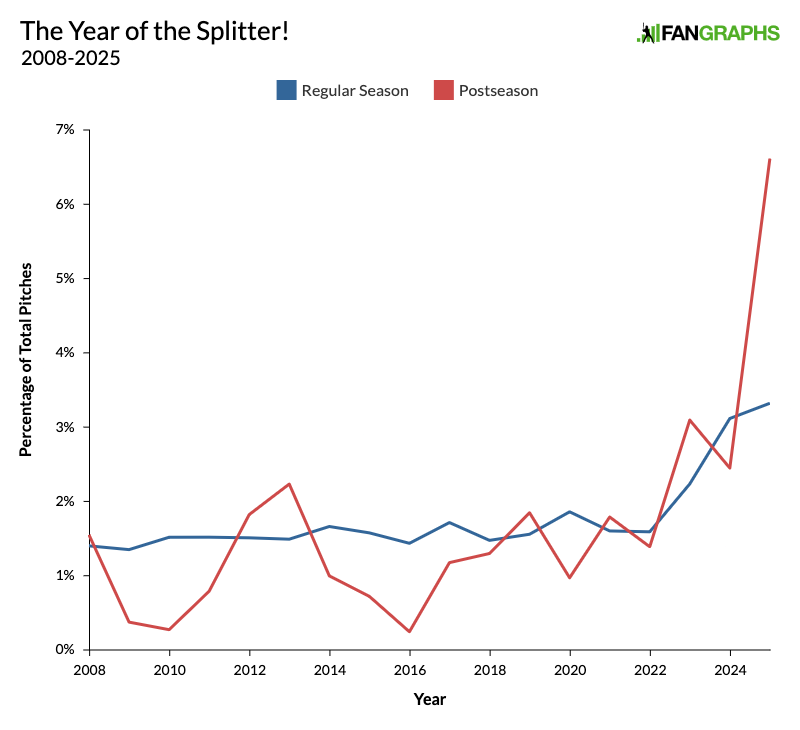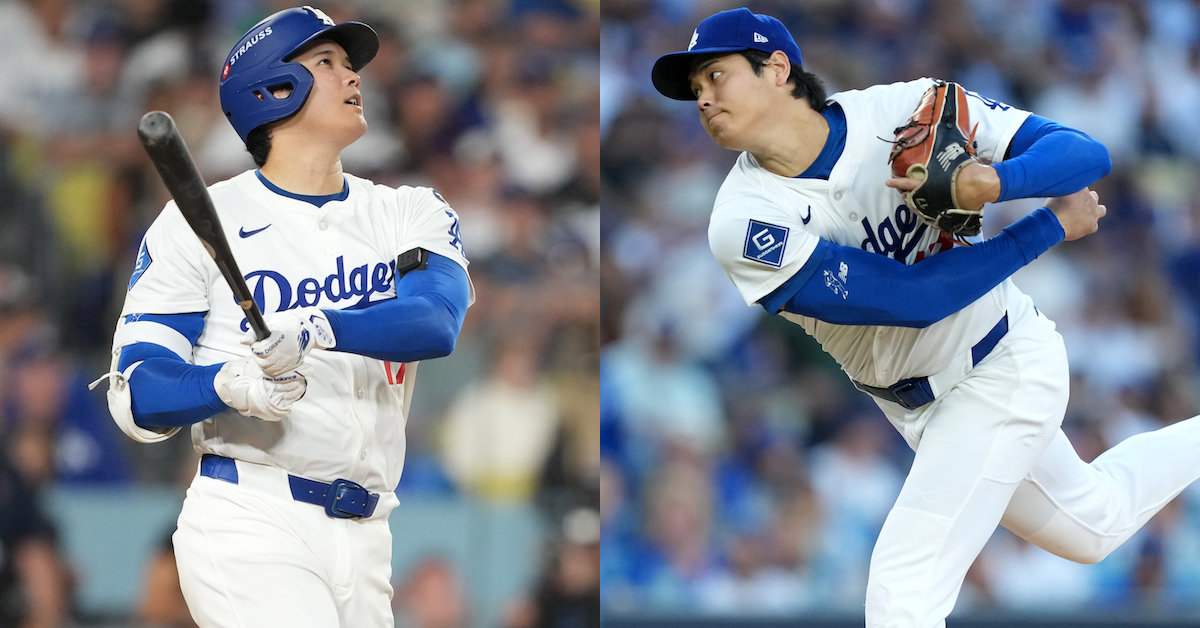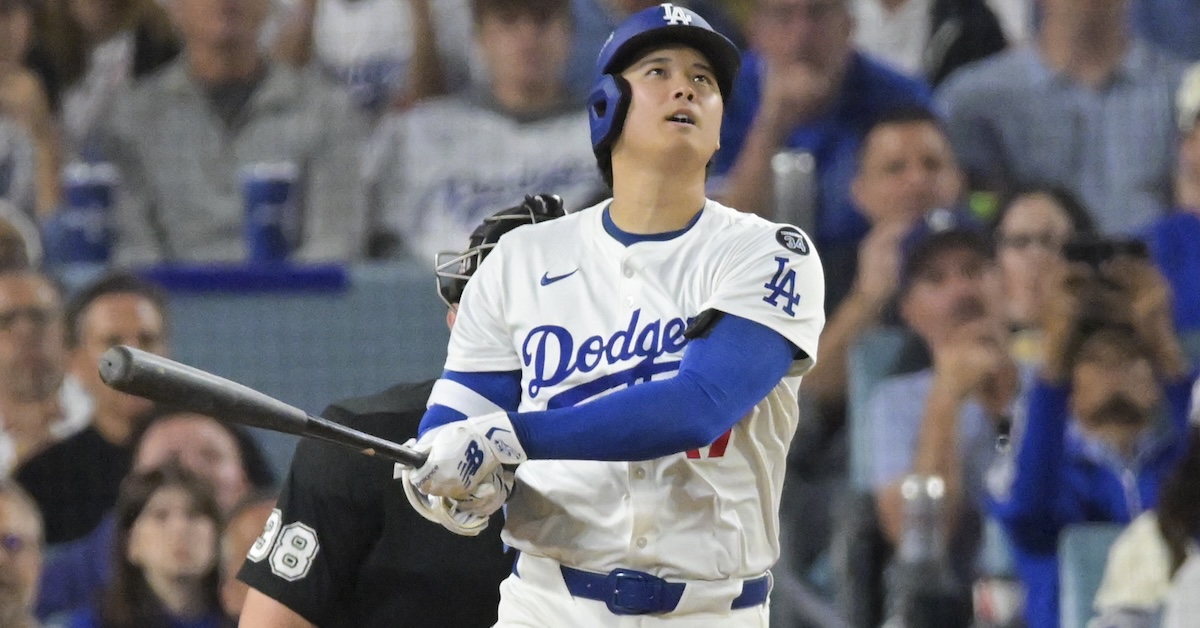The Empire Strikes Back: Dodgers Knot Series Behind Yamamoto Gem
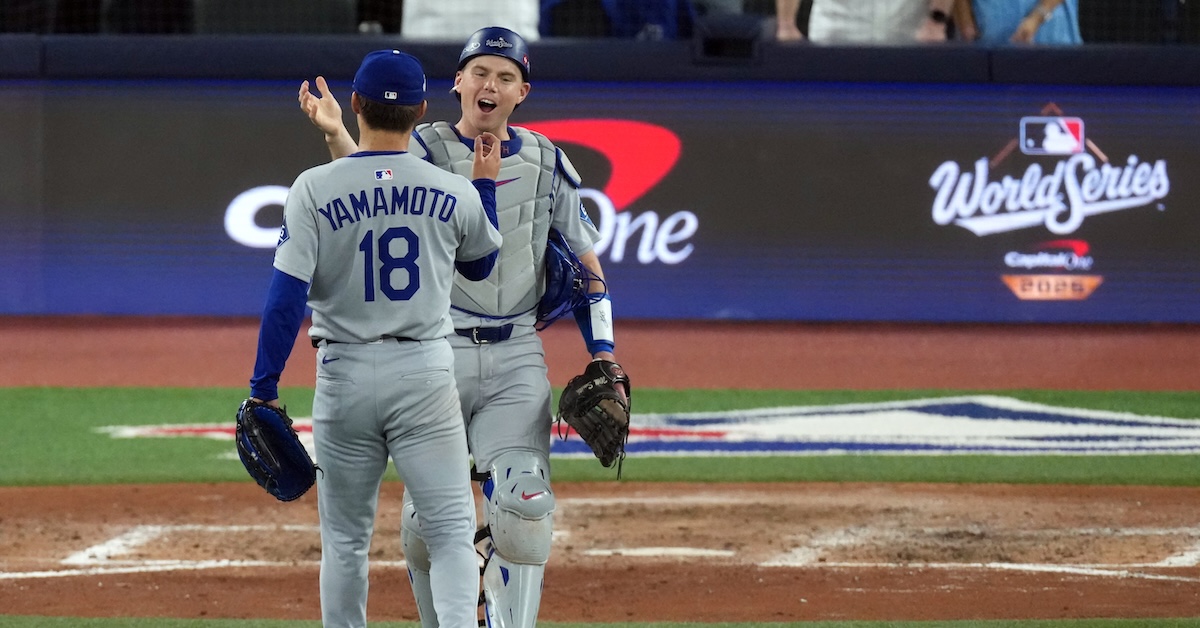
Opportunity knocks for everyone. In some cases, opportunity knocks, rings the doorbell, shouts into your Ring camera, tosses pebbles at your bedroom window, then goes out to its convertible in the driveway and starts singing “Thunder Road.”
Kevin Gausman and Yoshinobu Yamamoto were both terrific, but all duels end with one man standing and the other getting stabbed. Yamamoto twirled his second straight complete game, giving him the first streak of playoff complete games in 24 years. Gausman fell off the tightrope in the seventh inning, as home runs by Will Smith and Max Muncy put the visiting team in front for good. The Dodgers’ 5-1 win wasn’t as splashy as Toronto’s home run party the night before, but it evens the series.
Gausman was all but out of the first inning. He had two strikes on Freddie Freeman, who’d fouled off a splitter at his ankles, then a middle-middle fastball, then another heater up at his hands. Gausman went back to the splitter, the pitch that made him famous, and buried another. Read the rest of this entry »


